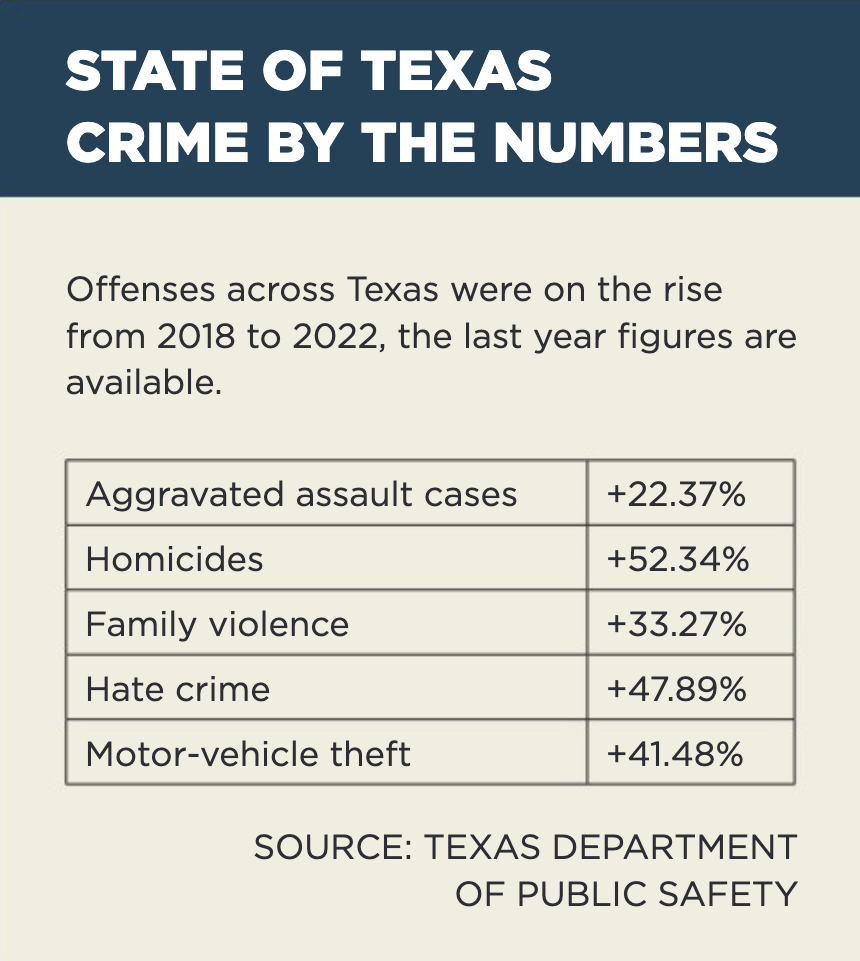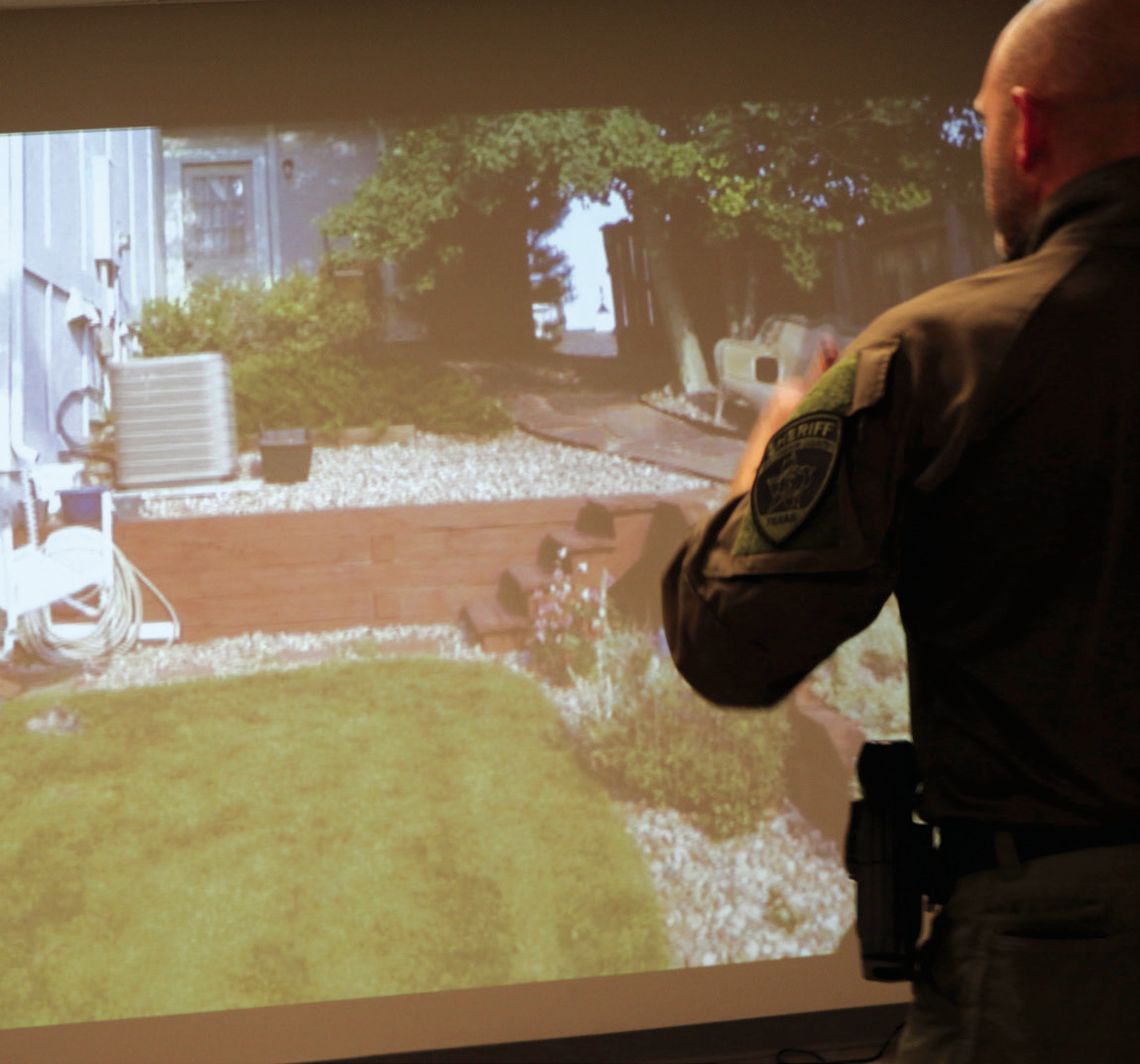After a long history of trying to do more with less, local law-enforcement agencies are now in the position to do more with more.
The rise in crime that accompanies a rise in population has led leaders both in the cities and the government of Williamson County to approve increased budgets for first responders and to acquire equipment including robots in hopes of stemming the tide.
“There’s been a challenge in law enforcement in the country, not just Central Texas and the state,” said Hutto Police Chief Jeffrey Yarbrough. “There’s been a reluctance of prospective candidates going into law enforcement and some of the incentives that used to interest officers, those things hadn’t worked as well.”

relations in modern policing.
He said with an increased financial investment to hire police, “We’ve stopped the bleeding and started the healing.”
According to the Texas Department of Public Safety, aggravated assault cases increased 22.37% in Texas from 2018 to 2022, the last year for which statistics are available. Homicides rose 52.34% over that same time period. Family violence was up 33.27%; hate crime, up 47.89%; and motor-vehicle theft rose 41.48%.
Meanwhile, the clearance rate — or when investigators believe they know who committed a crime, even if there is not always an arrest — is decreasing.

In 2018, 58.84% of Texas homicides were solved. In 2022, only 50.92% of the cases were cleared. The clearance rate for rape cases dropped from 26.78% to 17.67% during the same time. Aggravated assault clearance rates fell from 42.98% to 35.09%.
Larceny, already a difficult crime to solve according to investigators, dipped from 14.28% of cases cleared to 8.45%.
Add an epidemic of understaffed law enforcement departments and the impact on the community is multiplied, law officers said.
Recently, local leaders started turning things around.
Early last year, the Williamson County Commissioners Court approved a $4.4 million increase in the county’s budget to raise the pay scale for Williamson County Sheriff’s Office personnel. The result was a little over $8,000 added to the entry-level deputy starting salary, raising it from $56,519.82 to $64,552.
In September, the Hutto City Council added half-a-million dollars to its budget for Police Department salaries, bringing the entry-level officer position to $69,962 and making an immediate impact on recruiting efforts.
The budget increases have allowed local agencies to increase the number of peace officers on the payroll. Getting up to full staffing is just part of the equation, officials said. Even experienced officers need continual training in skills and in the culture of their community, according to local top cops.
“We’re constantly trying to get the latest and greatest training as far as investigation and patrol tactics,” said Joseph Branson, support services commander for the Taylor Police Department. “There’s always more to do, that’s why we’re always looking for any advantage we can to track and solve crime.”
The Sheriff’s Office took training in-house by building the Deputy A.W. Grimes Law Enforcement Training Center at 8160 Chandler Road, Hutto, in 2018.
“We have 570 or so officers between the corrections division and the law enforcement division and they all come to this facility to train,” said sheriff’s Sgt. Donald Foiles. “We also host training for other area law enforcement as well.”
The facility is set up to evaluate how individual officers respond to different situations and train for better responses with a use-of-force video simulator, as well as evaluating any instances from real life when force was used.
The simulator can be customized to train an officer who might need more confidence in physical-compliance techniques or situational deescalation, with guidance from supervisors who keep an eye on what’s happening on the streets as well.
“We hold response-to-resistance reviews every week. When we see somebody has used some type of force we try to go back and see if it could have been done better, if there were different outlets, and some of those things will steer the direction that our training will go,” said sheriff’s Lt. Jarod Morris.
State-of-the-art training at the facility includes an increased push toward physical fitness, ensuring officers and deputies are “fit to serve.”

“When we signed up for this job it came with the responsibility that we take care of ourselves so that we can take care of others,” said sheriff’s Deputy Ethan Nelms. “If my cardio isn’t in a place that allows me to be confident of my ability and I were to get into a confrontation with somebody, maybe I start to panic and I make a bad decision.”
He added, “Being a professional law enforcement officer requires a little bit more. Part of that is taking care of your body like you would take care of anything else you would use at work.”
Aside from human assets, budget increases have put more technology and better tools in the hands of officers and deputies, officials said.
Administrators with the Hutto Police Department report they have been able to upgrade to more accurate weapons, more body-worn cameras, protective gear, specialized evidence protocols, vehicle upgrades, software and computer system modernization and other tools to help fight crime.
One of the most dramatically successful, according to Yarbrough, is the drone program. He said the Police Department activated its drone in October, and within the first few days the airborne device was helping officers find missing people as well as some creative fugitives.
“One tried covering himself in mud and tried to go through the creek to disguise his footprints to hide from us and the drone was still able to detect and lead officers to where this individual was, and also lead officers to the area where the individual had hidden some of the evidence,” Yarbrough said.
The Sheriff’s Office also has drones available as part of its K-9, dive recovery, missing persons and special response teams, among others.
Drones aren’t the only high-tech tool in the box. Hutto recently purchased a remote-controlled robot that carries a cellphone and can establish communications or help officers evaluate situations. Using the robot and drone together can give multiple unique vantage points on high-risk situations to allow officers to evaluate safe options, investigators said.
According to Bellenir, robots gained importance for police departments in 2016, the first time United States law enforcement used a robot to neutralize a suspect. A shooter killed five police officers and injured nine others at a protest before barricading himself in a building at El Centro College in Dallas. The standoff ended when police used a bomb attached to a remote controlled-robot to take out the assailant.
Bellenir said a robot can help keep officers and community members safer in hostile situations because it can be controlled from up to two blocks away. Officers can use the video-call feature on the attached cellphone and send the robot into buildings to get visual and audio information. The phone can also establish communications in an armed, barricaded or hostage situation.
“Historically we have used what’s called rescue phones, a phone attached to a line connected to the armored response vehicle. And an officer has to get close enough to the structure or building the person is barricaded in to break a window and actually throw that rescue phone inside,” Bellenir said. “We no longer have the need for the hard line, we can roll the robot right up and start communications to try and deescalate the situation.”
Another bit of technology currently being installed locally are flock cameras. Mounted at street level they record and track vehicular traffic. Used in schools they monitor campus activity.
“Taylor Independent School District has over 500 flock cameras ... that feed into our dispatch center,” Branson said. “Our dispatcher can log into that campus and see what’s happening and give information to personnel on site. We’re in the process of getting these installed along strategic parts of the city for traffic. We’ll be able to search for a vehicle entering the city and narrow it down by type and date. You can imagine for investigative purposes that’s pretty valuable.”
Of all the new gadgets available to Hutto police, Yarbrough seems most proud of a phone app called TIP411. He said since its inception in 2023, the department has received multiple anonymous tips from residents that have resulted in capturing criminals in the act.
Even with all the technology at hand, maintaining good community and interagency relationships may be the most important aspect for local crimefighters’ success, officers said.




Comment
Comments